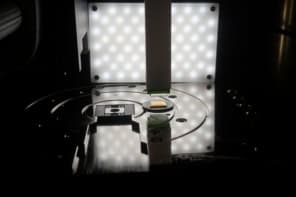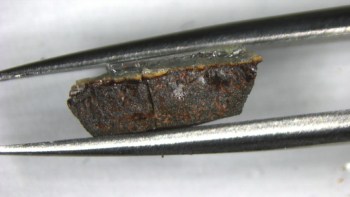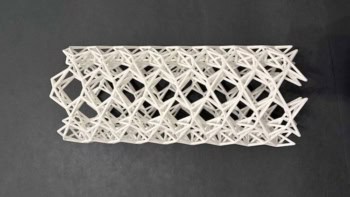NB: J Hendrik Schön, the author of one of the publications on which this article is based, has recently retracted a large number of publications following an investigation into scientific misconduct . While the paper by Schön et al. on which this article is partly based (J H Schön et al., A Single Molecular Spin Valve, Science 2002 0: 10705631-0) was not part of this investigation, and has not been retracted, we feel obliged to draw the investigation to the attention of readers.
Further information can be found at http://physicsweb.org/article/news/6/9/15.
The other publication on which this article is based (F Jedema et al 2002 Nature 416 713) is not related in any way to the paper by Schön et al or the investigation into misconduct.
Spintronic devices, which harness the spin of the electron as well as its charge, could be a step closer following recent experiments on ‘spin valves’. Physicists in the US have changed the spins of electrons travelling through a single molecule for the first time, proving that spintronics is compatible with the emerging field of molecular electronics. Meanwhile, a group in the Netherlands has reversed the sign of the output voltage of a device by changing the spins of the electrons flowing through it.

Conventional electronic devices only exploit the charge of electrons. But physicists believe that much more powerful devices could be built if the ‘spin’ of electrons – which can be either +1/2 or -1/2 – could be controlled too. When the spins of electrons are aligned – or ‘polarized’ – by a magnetic field, the resistance they experience as they travel through a conductor is different to that of unpolarized electrons. This effect can be studied in a ‘spin valve’, in which a conductor is sandwiched between two ferromagnetic electrodes.
With no external magnetic field, the electrodes are magnetized in the same direction – or ‘parallel’ – and the electrons travelling through the conductor are polarized. If an external magnetic field is switched on and increased until the magnetization of one electrode flips, the electrodes become ‘anti-parallel’ and the electrons are depolarized. But when the magnetic field becomes strong enough to flip the magnetization of the second electrode, the electrodes return to their parallel state.
Hendrik Schön of Bell Labs and colleagues used a spin valve to show that the electrons flowing through a single molecule of benzene-1,2-dithiolate can be polarized (J Schön et al 2002 Science to appear). His team placed the organic molecule between parallel nickel electrodes and applied a magnetic field. As they increased the field, the magnetization of the electrodes became anti-parallel and the current flowing through the molecule fell to half its previous value. But when the magnetic field became strong enough to return the electrodes to their parallel state, the current returned to its earlier level.
Bart van Wees and colleagues at the University of Groningen studied the conduction of electrons in a piece of aluminium sandwiched between cobalt electrodes (F Jedema et al 2002 Nature 416 713). As they increased the external magnetic field they found that the output voltage of the spin valve – the voltage across the detecting electrode and the aluminium conductor – changed from positive to negative, and back again. These reversals took place as the electrons first became unpolarized, and then returned to their polarized state.
A similar effect has been seen before (M Johnson and R Silsbee 1995 Phys. Rev. Lett. 55 1790), but the new device was around a thousand times smaller and allowed van Wees and colleagues to generate a sufficiently strong signal to observe changes in the sign of the output voltage.
Despite his team’s achievement, team member Friso Jedema warns that it will be difficult to make integrated spintronic devices that are controlled by magnetic fields. “An external magnetic field could not offer individual control over each spin transistor on a chip,” he told PhysicsWeb. “We see our results as a step forwards in the study and control of spin dynamics.”
Both groups demonstrated their breakthroughs at temperatures of just a few degrees kelvin to achieve the greatest effects, but the phenomena can be seen clearly at room temperature.



